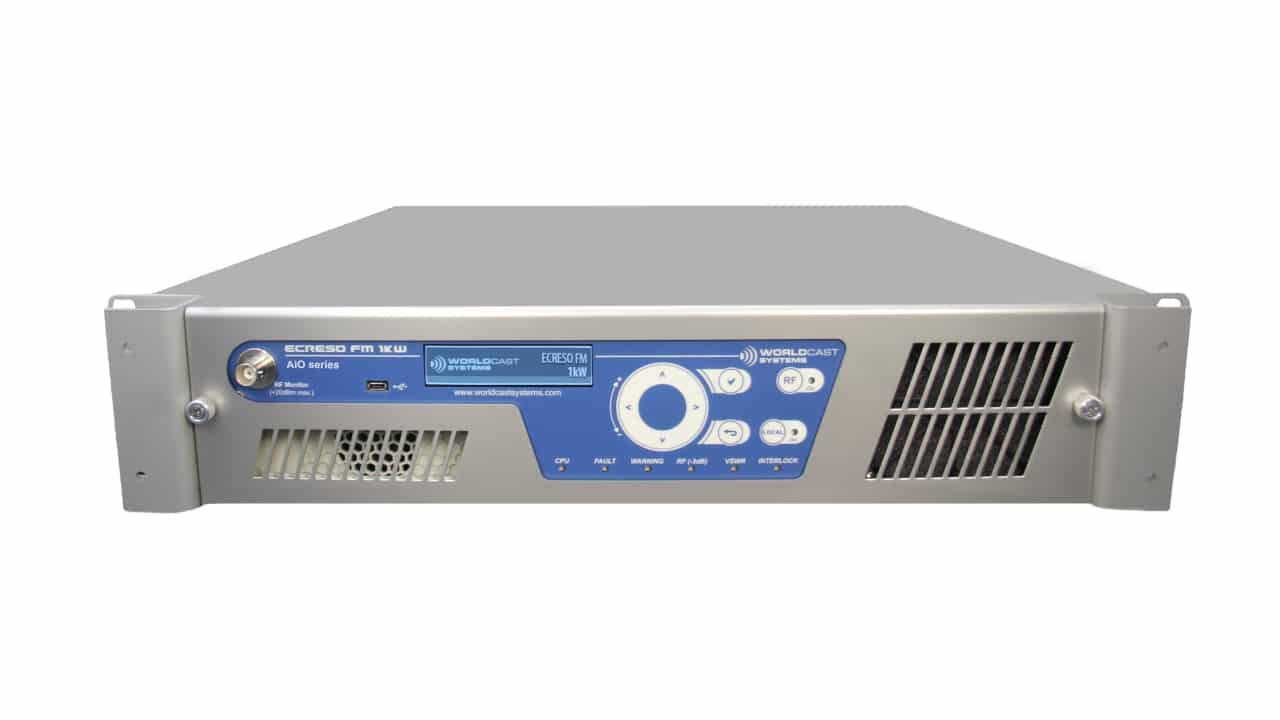What matters in radio? This is the life-blood question that plagues the thoughts of every member of the industry; from engineers to presenters to station managers.

Content is of course a priority. But what good is fantastic and compelling content if the broadcast quality is lacking, if it isn’t reliably delivered, and if it causes more frustration than fun?
The problem is, securing the highest QoS [Quality of Service] requires large, complex and expensive transmission infrastructures. Right?
Well, not quite. The deployment of creativity and innovation is changing the way radio infrastructure is viewed, and it’s this that is central to the thinking behind the development of WorldCast’s APTmpX: an MPX/composite algorithm, which the company says saves network bandwidth without deconstructing the original composite signal.
Context
 Analog MPX/composite distribution is not new; it has been a mainstay in transporting the FM signal from the studio to the transmitter site for many decades. But Kevin Campbell, APTmpX sales director, explains that before these microwave STL solutions were expensive, limited to one signal per system and subject to the usual interference and degradations associated with analog and microwave link delivery.
Analog MPX/composite distribution is not new; it has been a mainstay in transporting the FM signal from the studio to the transmitter site for many decades. But Kevin Campbell, APTmpX sales director, explains that before these microwave STL solutions were expensive, limited to one signal per system and subject to the usual interference and degradations associated with analog and microwave link delivery.
Once IP entered the scene, in a relatively short time, it became an important part of FM radio transport solutions. Then a few years ago came the standardization of MPX/composite over a single AES connector. But a problem remained: The IP data rate of a composite signal is prohibitively high for transport across most tariffs provided by Telcos, with a (64 kHz) bandwidth limited 16-bit MPX/composite signal requiring 2.1MBits, just pushing outside the standard 2Mbit tariff still used by many Telco’s.

Generating the final processed signal at the transmitter sites requires radio stations to maintain duplicate (and expensive) equipment at each site. By compressing the signal from 2.1MBits to 860kBits WorldCast explains that the APTmpX allows the MPX/composite signal to be assembled at a central point of processing. It’s then transported to the transmitter site for broadcast, eliminating the need for the maintenance of any MPX/composite processing equipment at each transmission station, with the exception possibly of a final limiter or clipper.
According to Worldcast, this “represents a significant shake-up of the traditional transport structure — and also provides complete flexibility” because the algorithm is transparent to transmission I/O — accommodating both digital AES192 and Analog MPX/composite transmitters, and thus allowing for operation on networks that maintain hybrid transmitter infrastructures.
Avoiding Deconstruction
 One way to reduce bandwidth requirements between studio and transmitter when transporting the MPX/composite signal is to engage in deconstruction — but the APTmpX seeks very specifically to avoid this. As Campbell says: “If a customer purchases a tier one audio processor and spends time, energy and (lots of) money, then we should respect the integrity of the signal egressed from that expensive processor.”
One way to reduce bandwidth requirements between studio and transmitter when transporting the MPX/composite signal is to engage in deconstruction — but the APTmpX seeks very specifically to avoid this. As Campbell says: “If a customer purchases a tier one audio processor and spends time, energy and (lots of) money, then we should respect the integrity of the signal egressed from that expensive processor.”
Bottom Line
Why does any of this matter? Well, according to Hartmut Foerster, APT Product Manager, the cost savings of a centralized MPX/composite setup are significant. “Not only does a station save on equipment purchase and maintenance at transmission sites, but they can now fit two services per network tariff, where previously it was — at best — one,” he explains.
“When combined with our SureStream technology – which protects against overmodulation through packet loss protection — the APTmpX even allows for services to be transmitted across public internet,” he adds.
“On top of these cost savings, QoS and reliability are significantly improved because adoption of a centralized approach to signal combination guarantees the station’s signal integrity, and thus sonic signature.” This arguably provides a notable advantage over the traditional decentralized approach to MPX/composite signal production.





















